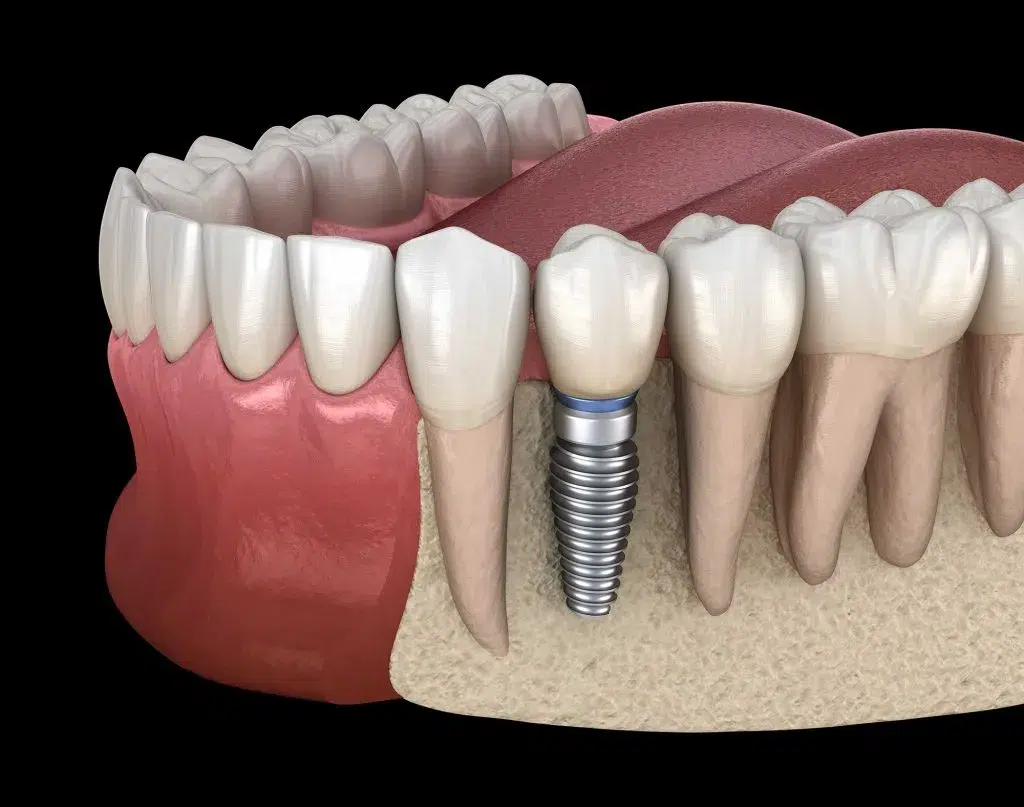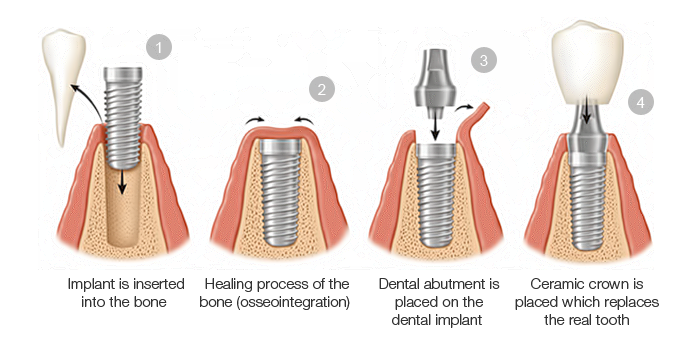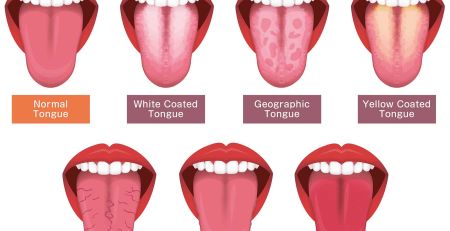What is Osseointegration?
Osseointegration is a critical biological process that forms the basis for successful dental implant procedures. Derived from the Greek word ‘osteon’, meaning bone, and the Latin word ‘integrate’, meaning to make whole, osseointegration refers to the direct structural and functional connection between living bone and the surface of a load-bearing artificial implant.
Table of Contents
Dental implants have emerged as a leading solution for replacing missing teeth in dental restoration, mainly due to a biological process known as osseointegration. A term that might seem complex, osseointegration plays an essential role in the success of dental implants.
In dental implants, osseointegration is when the jawbone fuses with the titanium implant post, creating a sturdy and long-lasting foundation for the artificial tooth.
Purpose of Osseointegration
The purpose of osseointegration in dental implants is to ensure a stable and secure connection between the implant and the jawbone. This intimate bond mimics the natural root-tooth interface, providing the necessary strength and stability for the implant to withstand biting and chewing forces like natural teeth.
Why is Osseointegration Needed For Dental Implants?
Osseointegration is a fundamental requirement for the success of dental implant procedures. Without this process, the implant will lack the stability needed to function as a natural tooth.
Additionally, a successfully osseointegrated implant maintains the health and integrity of the surrounding jawbone. Without natural tooth roots, the jawbone tends to shrink over time – a process known as resorption. By simulating the presence of a natural tooth root, dental implants stimulate the jawbone, helping prevent bone loss.
Risks Involved With Osseointegration
While osseointegration has a high success rate, it’s not without potential risks. These include infection, nerve damage, sinus problems, and implant failure. The risk factors increase in patients who smoke, have poor oral hygiene, or suffer from certain systemic diseases like uncontrolled diabetes.
Sometimes, the body may not accept the implant, leading to failure. Additionally, the implant may fail to osseointegrate if subjected to heavy biting forces too soon, emphasising the importance of giving the implant time to fuse with the bone properly.
Benefits of Osseointegration
The benefits of osseointegration in dental implants are numerous:
- Stability and Comfort: Because the implant fuses with the jawbone, it offers exceptional stability and feels comfortable, just like a natural tooth.
- Prevention of Bone Loss: Dental implants stimulate the jawbone, helping to maintain its volume and density.
- Long-Lasting Results: Dental implants can last a lifetime when properly cared for.
- Improved Quality of Life: Dental implants, with their natural look, feel, and function, significantly improve the patient’s ability to eat, speak, and smile confidently.
The Process of Osseointegration with Dental Implants
The process of osseointegration typically follows these steps:
- Dental Implant Surgery: The implant, a small titanium post, is placed into the jawbone.
- Healing Period: The patient then goes through a healing period ranging from several weeks to a few months. During this time, the bone grows around the implant, a process known as osseointegration.
- Abutment and Crown Placement: Once the implant fully integrates with the bone, an abutment is attached. Finally, a custom-made dental crown is fixed onto the abutment, completing the restoration.
Requirements for Successful Osseointegration
Several factors are essential for successful osseointegration:
-
- Healthy Jawbone: Adequate bone quantity and quality are vital for the implant to integrate securely.
- Overall Health: Good general health and proper oral hygiene contribute significantly to the success of osseointegration.
- Qualified Professionals: The expertise of the dental professional performing the implant surgery impacts the success of osseointegration.
- Quality of Implant Material: Using a high-quality, biocompatible implant material like titanium is crucial.
What happens if I don’t have enough bone for Osseointegration?
If you don’t have sufficient bone in your jaw to support a dental implant, it doesn’t necessarily mean dental implants are not an option. Some procedures can prepare your jawbone to receive the implant through bone grafting. Oral bone grafts are often performed by specialists known as Oral and Maxillofacial Surgeons. Qualified and trained periodontists may also perform such procedures. For straightforward cases, general dentists who have received appropriate training and education can also perform bone grafts.
Bone grafting involves taking bone from another part of your body or using a special bone grafting material and grafting it onto your jawbone. Over time, the grafted bone will grow and become strong enough to support a dental implant.
There are different types of bone grafts:
- Autografts are when bone is taken from another part of the body, such as the hip or chin.
- Allografts: These use bone from a deceased human donor.
- Xenografts: These utilise bone from another species, usually a cow.
- Alloplasts: These are synthetic bone substitutes.
The type of bone graft used will depend on your specific situation.
After the bone grafting procedure, there will be a healing period that can range from a few months to a year, depending on the type of graft. Once healed, your jawbone should be strong enough to support a dental implant through osseointegration. Your implant dental professional would then require further assessment.
Summary
Osseointegration forms the foundation of successful dental implant procedures, offering numerous benefits and revolutionising restorative dentistry. If you’re considering dental implants, understanding osseointegration can help you make an informed decision.
At Amazing Smiles, we are committed to providing you with high-quality dental implant solutions. We accept all major health funds and are preferred provider dentists, enabling you to maximise the most out of your private health benefits. We also offer interest-free payment plans for out-of-pocket expenses.
All Amazing Smiles clinics have partnered with Supercare, allowing you to access your superannuation for dental implants and other restorative procedures. Book a free initial consultation with us for a personalised quote. With our team of skilled professionals, you can embark on your journey towards a healthier, brighter smile.






